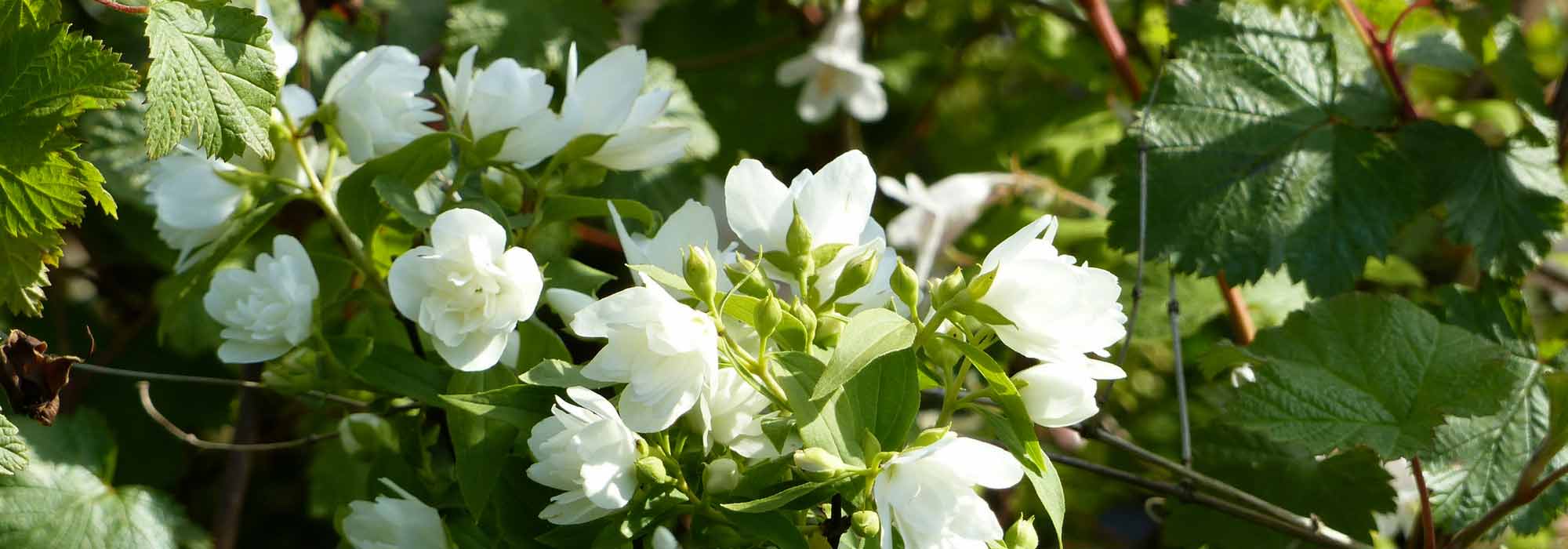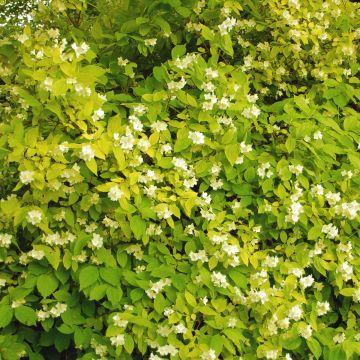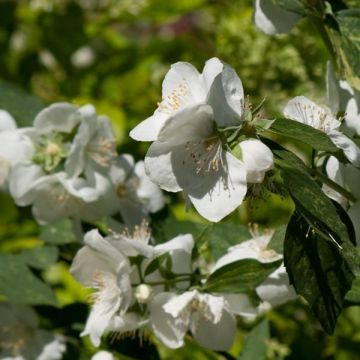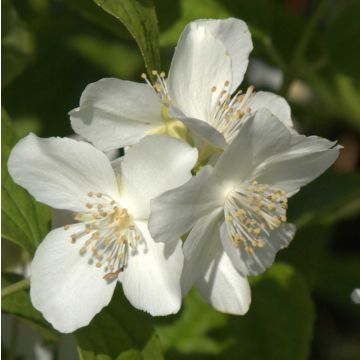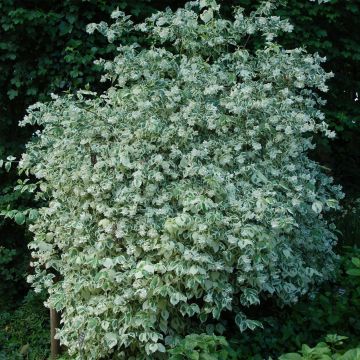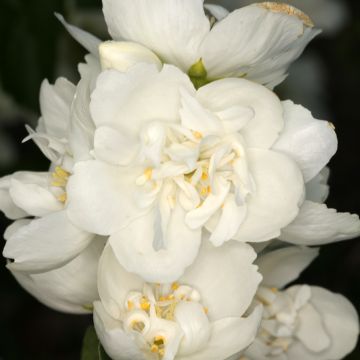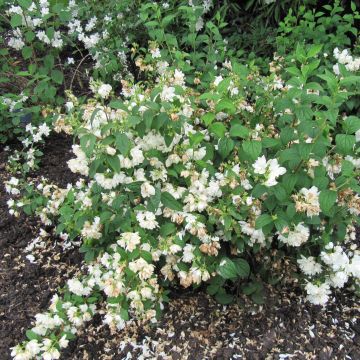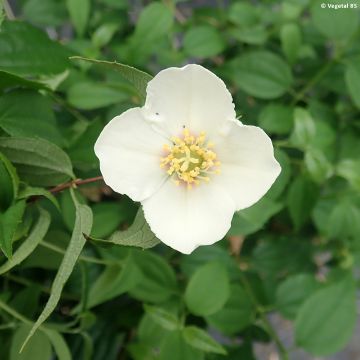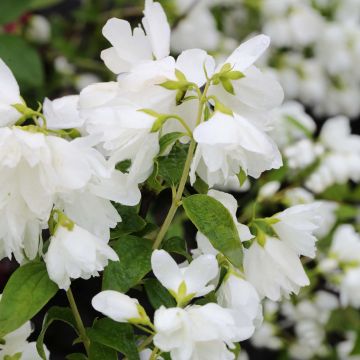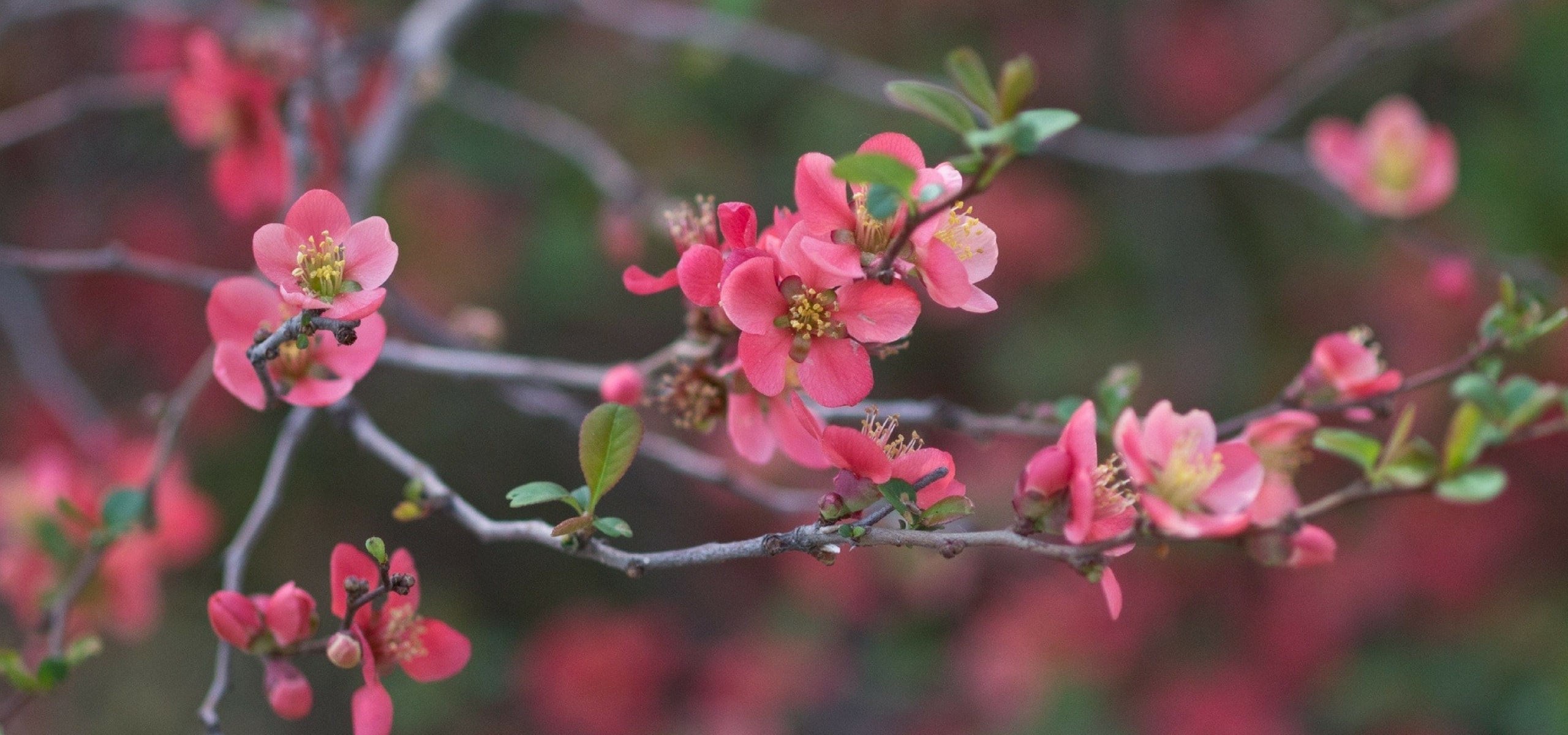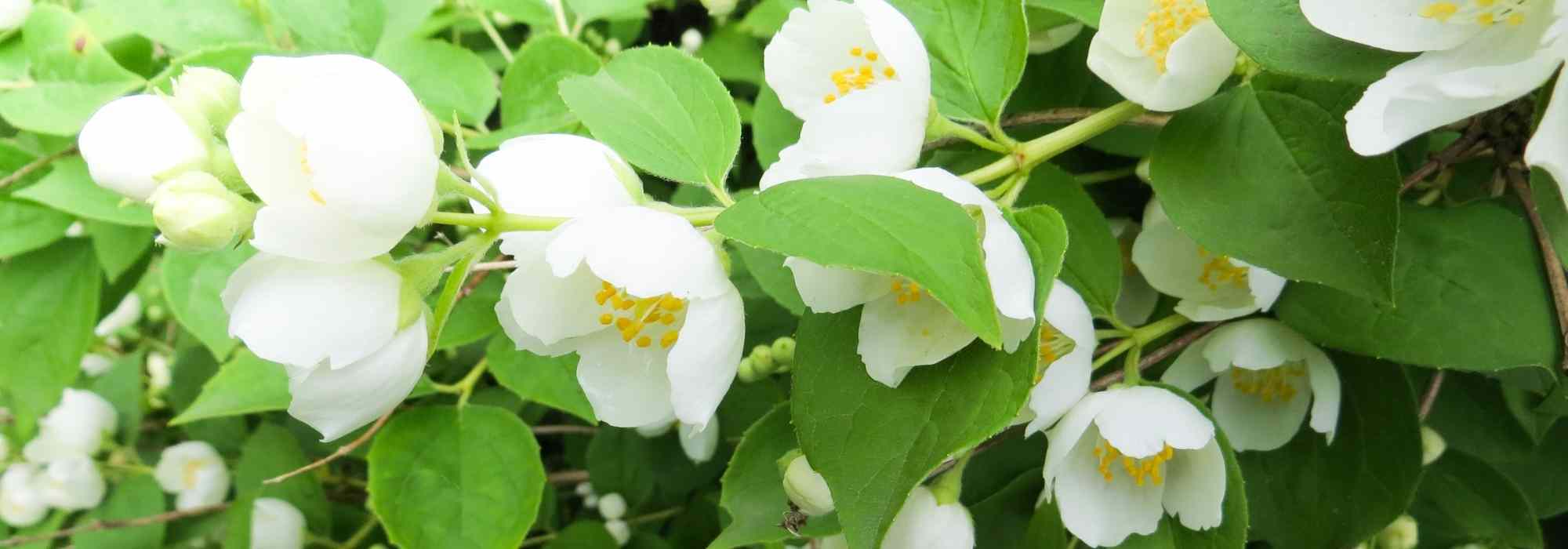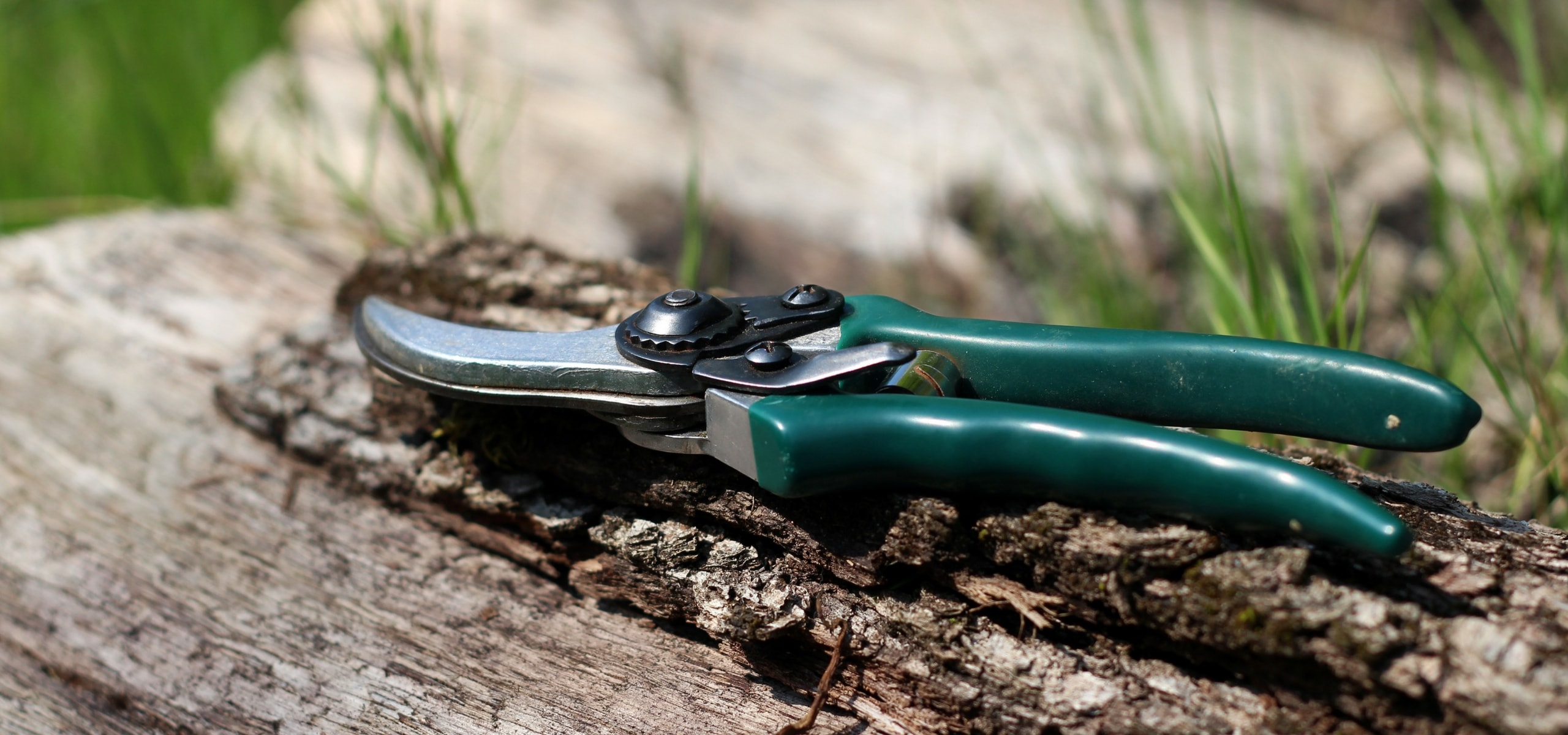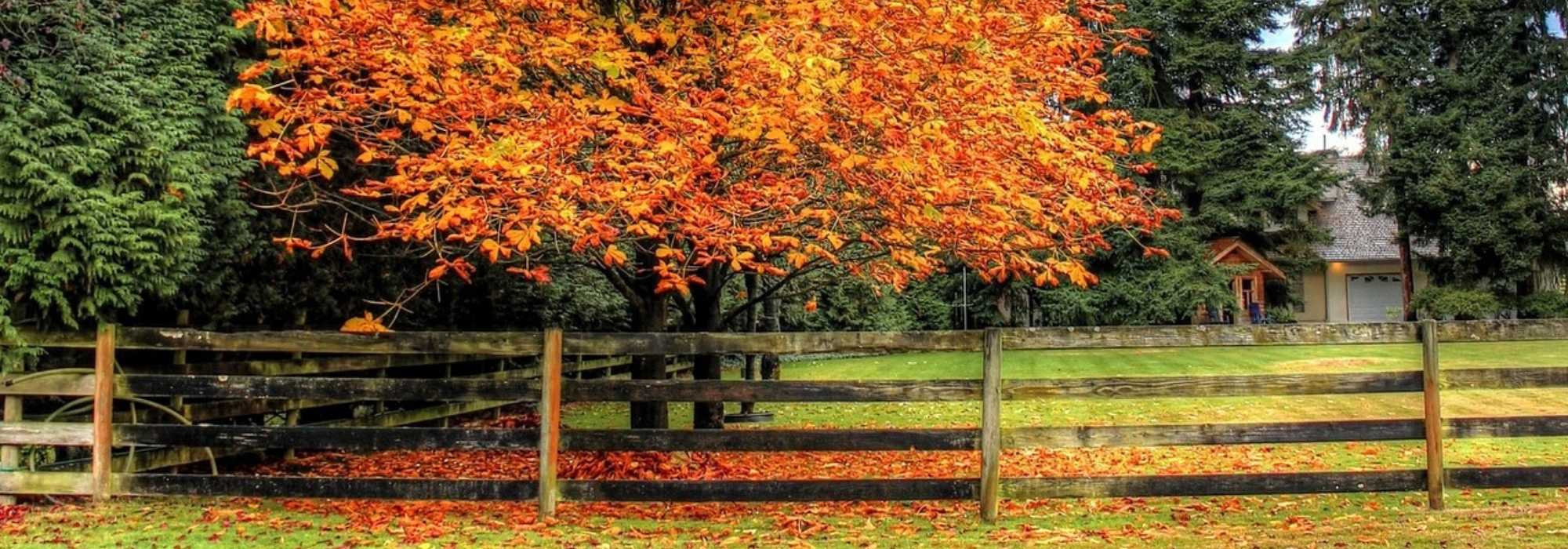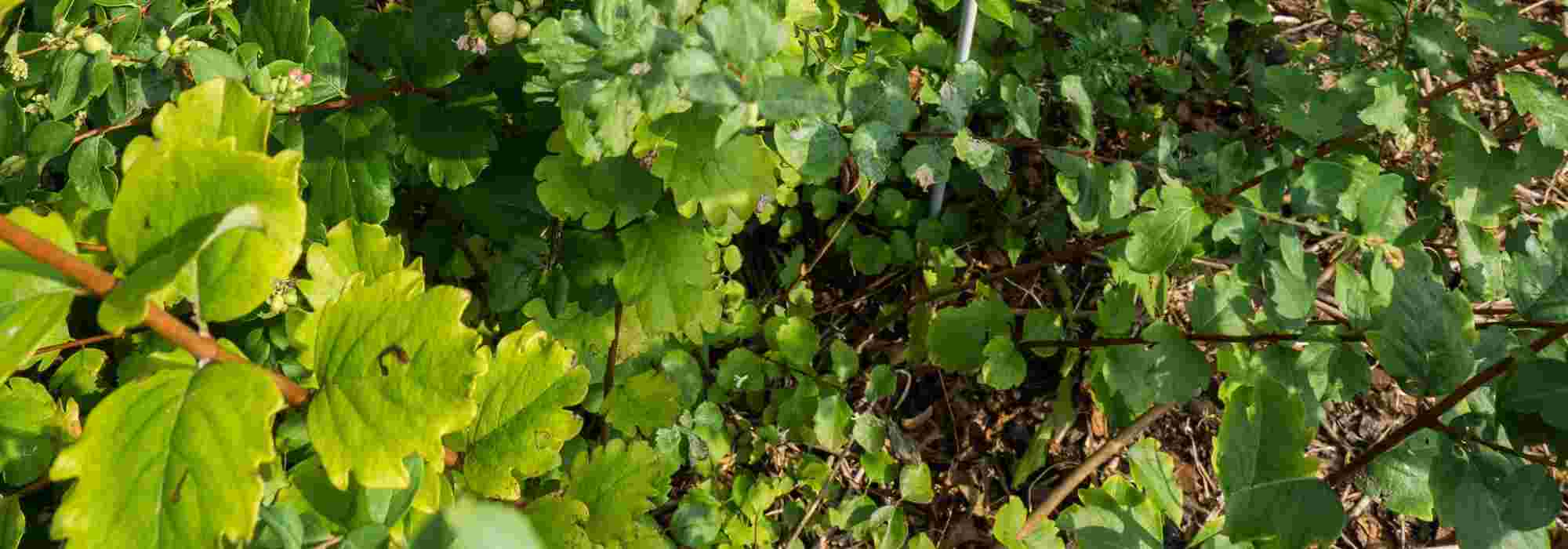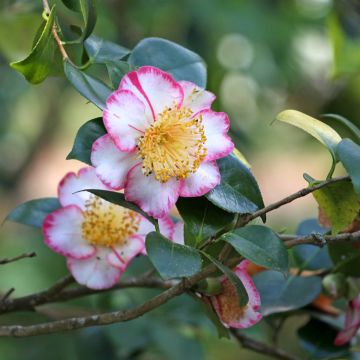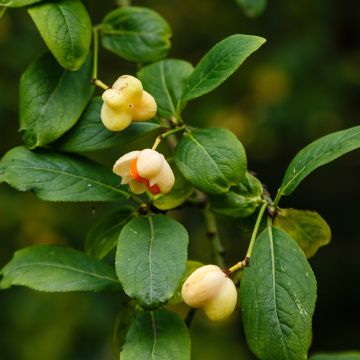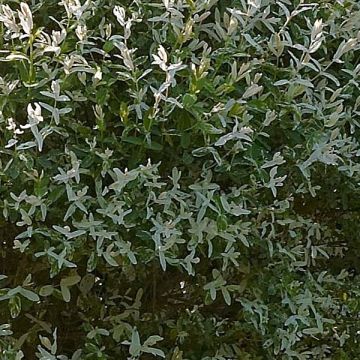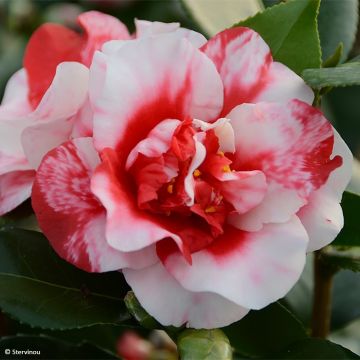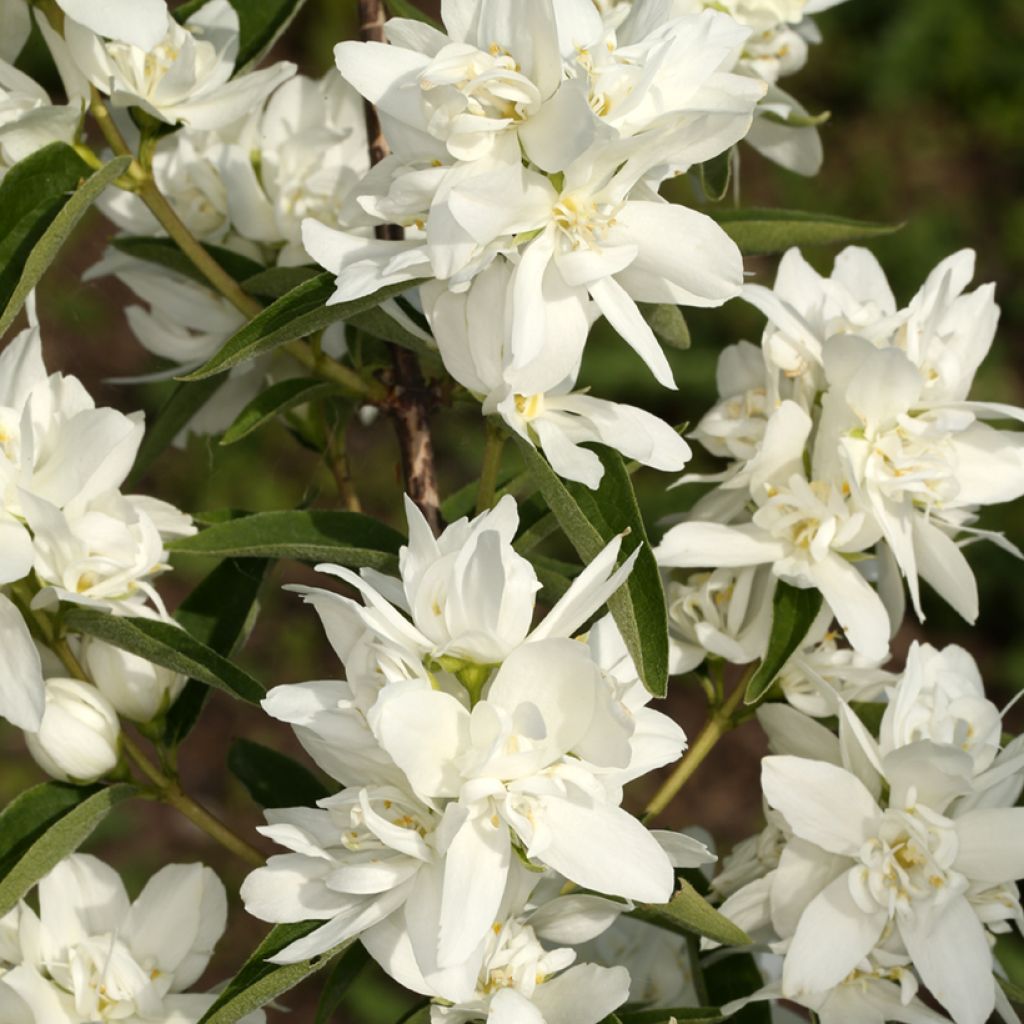

Philadelphus Komsomolec - Mock Orange
Philadelphus Komsomolec - Mock Orange
Philadelphus Komsomolec
Mock Orange, Syringa.
Special offer!
Receive a €20 voucher for any order over €90 (excluding delivery costs, credit notes, and plastic-free options)!
1- Add your favorite plants to your cart.
2- Once you have reached €90, confirm your order (you can even choose the delivery date!).
3- As soon as your order is shipped, you will receive an email containing your voucher code, valid for 3 months (90 days).
Your voucher is unique and can only be used once, for any order with a minimum value of €20, excluding delivery costs.
Can be combined with other current offers, non-divisible and non-refundable.
Home or relay delivery (depending on size and destination)
Schedule delivery date,
and select date in basket
This plant carries a 24 months recovery warranty
More information
We guarantee the quality of our plants for a full growing cycle, and will replace at our expense any plant that fails to recover under normal climatic and planting conditions.
Does this plant fit my garden?
Set up your Plantfit profile →
Description
The Philadelphus 'Komsomolec' is an old variety of compact white Mock Orange, with an upright and well-clustered habit. In late spring, it produces a superb double white flowering with a highly appreciated fragrance. Forming clusters at the end of branches, the flowers stand out well against the relatively dark green foliage. Hardy, the shrub grows in most soils, preferably in full sun or partial shade. Its morphology lends itself well to the creation of low mixed hedges, and you can also integrate it into a diverse flower bed to achieve an extended flowering period.
Philadelphus, named after the nickname of the Egyptian monarch Ptolemy II, is a member of the Hydrangea family, which owes its name to the Hydrangea (Hydrangea), arguably the most iconic genus. There are about sixty species of Philadelphus, or Mock Orange, almost all native to the Northern Hemisphere (Europe, Caucasus, East Asia, Himalayas, and North America) and deciduous. However, there are a few evergreen species that grow in Central America (such as Philadelphus mexicanus). Many horticultural varieties have been produced by breeders, including the famous French breeder Victor Lemoine, known worldwide for his work on different plant genera.
The 'Komsomolec' Mock Orange is a deciduous variety created by Soviet breeder N.K. Vekhova in 1951. The shrub has an upright habit, forming an erect tuft that reaches a height of 1.30 to 1.50 m at maturity and a width of 70 cm. The stems are upright and do not open at the top, maintaining a well-clustered silhouette, which is interesting for hedge use. The leaves are dark green on top, lighter underneath with hairs at the axil of the veins. They are relatively large for the genus, have a dentate border, and are opposite on the branches. This fairly dark foliage is perfect for highlighting the light flowers that bloom in late spring and early summer. About 4.5 cm in diameter, the double flowers stand out against the foliage with their pure white colour, enhanced by light yellow anthers. Grouped in 3 or 4, the flowers form scented white pompoms that perfume the garden for approximately three weeks. Since flowering is the main asset of this shrub, it is preferable to plant it alongside other plants with staggered flowering, either to create a low hedge or to integrate it into a diverse flower bed, or even to plant it in the background of a mixed border. This Philadelphus thrives in full sun but will also tolerate light shade.
With its upright habit and small size, the Philadelphus 'Komsomolec' easily fits into a free hedge, which you can lightly prune with secateurs to maintain a natural appearance. To brighten up the early season, opt for the 'Flying Machine' Korean Goldenbell Tree, which will delight you with its bright yellow star-shaped flowers from March to May, depending on your region. In May-June, the 'Strawberry Fields' Deutzia will offer you raspberry-pink flowers edged with white, with a charming touch of romance. And to flower your summer, nothing beats a few Hibiscus syriacus plants in your hedge. The range includes single or double flowers in multiple colours, as well as numerous bicoloured varieties, so you just have to make your choice!
Plant habit
Flowering
Foliage
Botanical data
Philadelphus
Komsomolec
Hydrangeaceae
Mock Orange, Syringa.
Cultivar or hybrid
Other Philadelphus - Mock Orange
View all →Planting and care
The Philadelphus 'Komsomolec', very easy to grow, requiring very little maintenance and very accommodating, is well suited to all gardens and ideal for beginner gardeners. It thrives in ordinary, poor, even chalky soil, not too dry but rather moist. While it can tolerate drought once established, it tends to lose its leaves in hot and dry climates during summer and prefers a soil that remains slightly moist, well-drained, and humus-bearing. Highly hardy, it can withstand temperatures as low as -20°C. Planting should be done in early spring or autumn, preferably in full sun or light shade in hot regions. Avoid excessively hot exposures in dry and hot climates. Flowering on previous year's growth, Philadelphus should be pruned after flowering, in July-August, by shortening the flowering shoots by one third of their length. A more severe pruning can be done every 2 to 3 years to keep it compact and highly floriferous. Simply do not hesitate to cut back old wood and excessively long branches to the base of the plant to encourage branching from the base. While it is a resistant shrub, it can be prone to powdery mildew (treat with liquid sulphur) and also to black aphids (spray with black soap).
Planting period
Intended location
Care
Planting & care advice
This item has not been reviewed yet - be the first to leave a review about it.
Similar products
Haven't found what you were looking for?
Hardiness is the lowest winter temperature a plant can endure without suffering serious damage or even dying. However, hardiness is affected by location (a sheltered area, such as a patio), protection (winter cover) and soil type (hardiness is improved by well-drained soil).

Photo Sharing Terms & Conditions
In order to encourage gardeners to interact and share their experiences, Promesse de fleurs offers various media enabling content to be uploaded onto its Site - in particular via the ‘Photo sharing’ module.
The User agrees to refrain from:
- Posting any content that is illegal, prejudicial, insulting, racist, inciteful to hatred, revisionist, contrary to public decency, that infringes on privacy or on the privacy rights of third parties, in particular the publicity rights of persons and goods, intellectual property rights, or the right to privacy.
- Submitting content on behalf of a third party;
- Impersonate the identity of a third party and/or publish any personal information about a third party;
In general, the User undertakes to refrain from any unethical behaviour.
All Content (in particular text, comments, files, images, photos, videos, creative works, etc.), which may be subject to property or intellectual property rights, image or other private rights, shall remain the property of the User, subject to the limited rights granted by the terms of the licence granted by Promesse de fleurs as stated below. Users are at liberty to publish or not to publish such Content on the Site, notably via the ‘Photo Sharing’ facility, and accept that this Content shall be made public and freely accessible, notably on the Internet.
Users further acknowledge, undertake to have ,and guarantee that they hold all necessary rights and permissions to publish such material on the Site, in particular with regard to the legislation in force pertaining to any privacy, property, intellectual property, image, or contractual rights, or rights of any other nature. By publishing such Content on the Site, Users acknowledge accepting full liability as publishers of the Content within the meaning of the law, and grant Promesse de fleurs, free of charge, an inclusive, worldwide licence for the said Content for the entire duration of its publication, including all reproduction, representation, up/downloading, displaying, performing, transmission, and storage rights.
Users also grant permission for their name to be linked to the Content and accept that this link may not always be made available.
By engaging in posting material, Users consent to their Content becoming automatically accessible on the Internet, in particular on other sites and/or blogs and/or web pages of the Promesse de fleurs site, including in particular social pages and the Promesse de fleurs catalogue.
Users may secure the removal of entrusted content free of charge by issuing a simple request via our contact form.
The flowering period indicated on our website applies to countries and regions located in USDA zone 8 (France, the United Kingdom, Ireland, the Netherlands, etc.)
It will vary according to where you live:
- In zones 9 to 10 (Italy, Spain, Greece, etc.), flowering will occur about 2 to 4 weeks earlier.
- In zones 6 to 7 (Germany, Poland, Slovenia, and lower mountainous regions), flowering will be delayed by 2 to 3 weeks.
- In zone 5 (Central Europe, Scandinavia), blooming will be delayed by 3 to 5 weeks.
In temperate climates, pruning of spring-flowering shrubs (forsythia, spireas, etc.) should be done just after flowering.
Pruning of summer-flowering shrubs (Indian Lilac, Perovskia, etc.) can be done in winter or spring.
In cold regions as well as with frost-sensitive plants, avoid pruning too early when severe frosts may still occur.
The planting period indicated on our website applies to countries and regions located in USDA zone 8 (France, United Kingdom, Ireland, Netherlands).
It will vary according to where you live:
- In Mediterranean zones (Marseille, Madrid, Milan, etc.), autumn and winter are the best planting periods.
- In continental zones (Strasbourg, Munich, Vienna, etc.), delay planting by 2 to 3 weeks in spring and bring it forward by 2 to 4 weeks in autumn.
- In mountainous regions (the Alps, Pyrenees, Carpathians, etc.), it is best to plant in late spring (May-June) or late summer (August-September).
The harvesting period indicated on our website applies to countries and regions in USDA zone 8 (France, England, Ireland, the Netherlands).
In colder areas (Scandinavia, Poland, Austria...) fruit and vegetable harvests are likely to be delayed by 3-4 weeks.
In warmer areas (Italy, Spain, Greece, etc.), harvesting will probably take place earlier, depending on weather conditions.
The sowing periods indicated on our website apply to countries and regions within USDA Zone 8 (France, UK, Ireland, Netherlands).
In colder areas (Scandinavia, Poland, Austria...), delay any outdoor sowing by 3-4 weeks, or sow under glass.
In warmer climes (Italy, Spain, Greece, etc.), bring outdoor sowing forward by a few weeks.






























